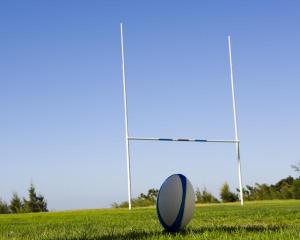
From the Lammermoor Range in Central Otago to Taieri Mouth, southwest of Dunedin, five Otago kayakers spent eight days this spring descending the 288km Taieri River, from its source to the sea, Hamish MacLean reports.
The headwaters of the Taieri River are really not that far "as the crow flies" from where the river goes to sea, Ellorine Carle says.
On its way though, the fourth-longest river in New Zealand first flows northeast, away from the coast.
From the tussock and snow-covered hills of the Lammermoor Range the river drops down to meander through scroll plains.
It then takes a huge U-turn around the Rock and Pillar Range before snaking south to Outram and on to Taieri Beach.
While sections of the river are well-known to whitewater kayakers, Ms Carle enlisted Max Rayner, Nick Pascoe, Dan Sutherland and Blake Hornblow, all of Otago, to complete what they believe was the first source-to-sea trip along the varied reaches of the river.
The backyard adventure not only allowed the group to experience the river’s beauty but also shed light on its environmental challenges and importance to the kayaking community.
"Having paddled the river gives you the full appreciation for what’s out there," Ms Carle said.
"I feel a bit more connected to the area and to the river."
The party of five encountered whitewater but also slogged through meandering scroll plains.
They watched pure white snow melt into the river’s pristine upper reaches, but also saw and smelled the difference birds, agriculture and a slower flow made.
They encountered tribes of up to 20 feral goats, had the meal of their lives at the Waipiata Country Hotel and they slept under the stars.
"Everyone on the trip is into ‘earning their turns’," Ms Carle said.
"They don’t mind doing a lot of hiking or flatwater to get to do some whitewater, see new places."
Mr Hornblow, who flatted with Ms Carle last year and was one of the first recruits, said the trip revealed the beauty of travelling across country in a kayak.
It was also "pretty eye-opening" to see how many people used the river, from farming and irrigation to generating power.
Water quality issues appeared not long after the river descended from its headwaters about 1000m above sea level, he said.
Over the last few days of the trip, the group saw about 10 dead animals in the water.
Despite bringing water filtration systems, the group searched out tributaries where the water looked a little bit cleaner to drink.
"We knew it was going to be a bit gross, but I guess it was worse than we thought," he said.
"A couple of us got sick at one point.
"It’s such a big catchment and we were just kind of interested to see what different people were valuing the river for: whether they just see it as a resource, for a business, or you know, there were fishermen on there, people use it for recreation.
"And yeah, it is a pretty awesome river for kayaking as well."
On the eighth day the group paddled from Outram and pulled up at the beach at Taieri Mouth, where a couple of friends picked them up and brought a few beers to celebrate.
"Taieri Mouth is beautiful.
"It was a nice spot to finish — that coast is awesome," Mr Hornblow said.
The group received an expedition scholarship from Federated Mountain Clubs.











